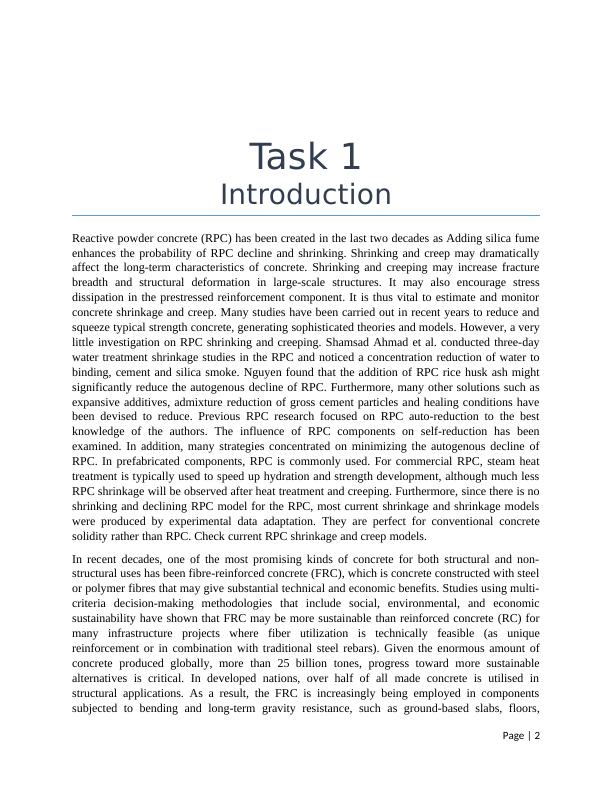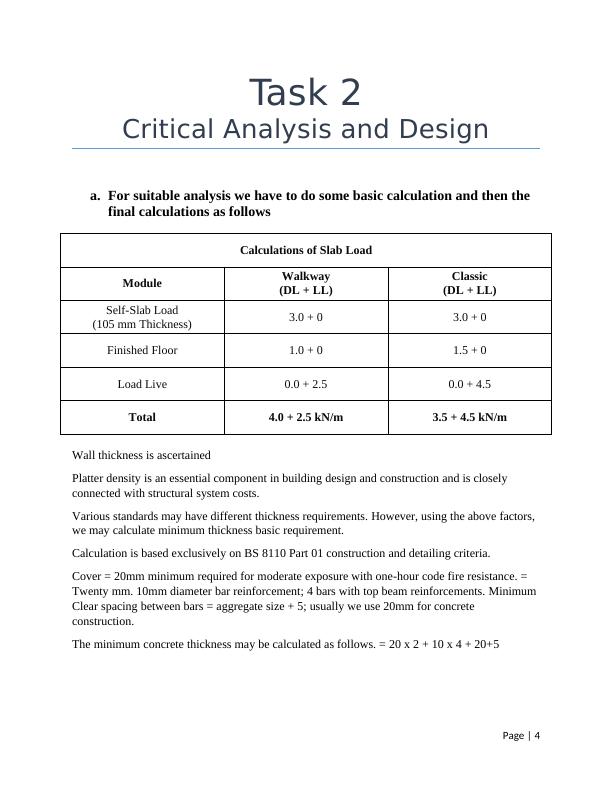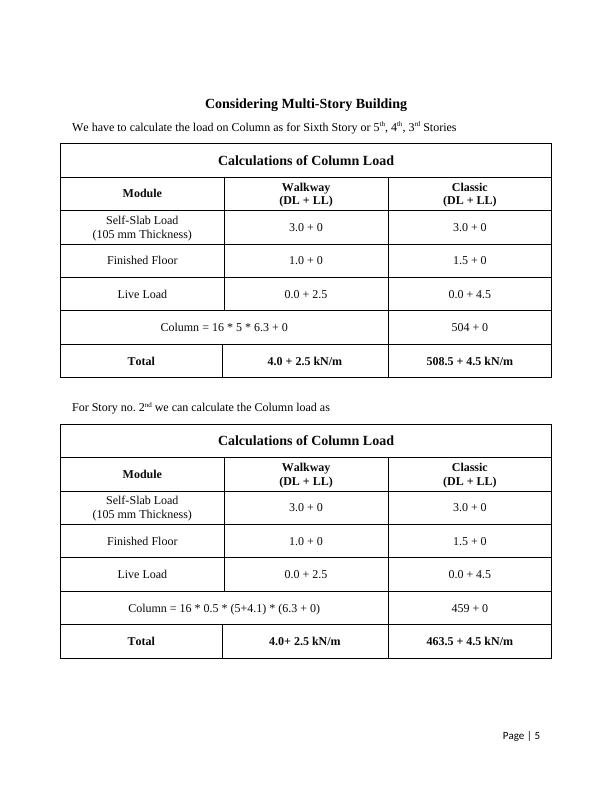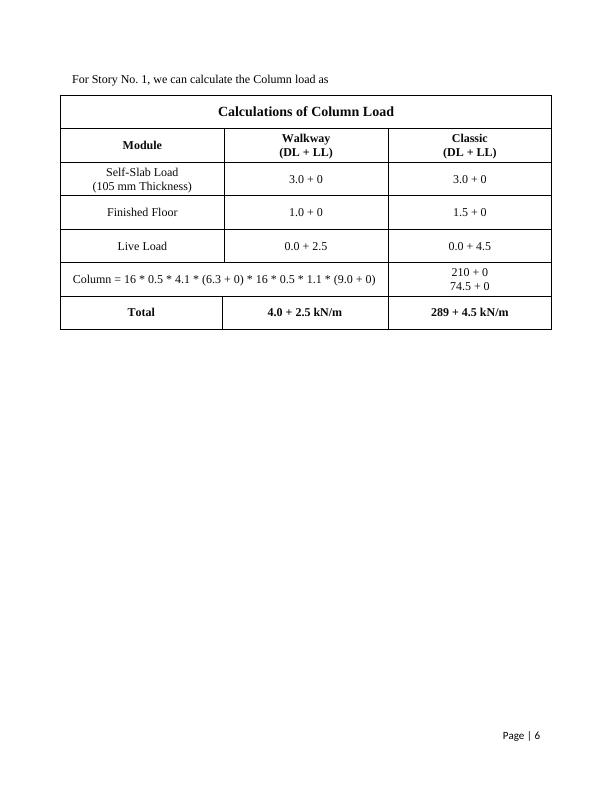(PDF) Creep and Shrinkage in Concrete Structures
Added on 2021-06-11
26 Pages5851 Words106 Views
ContentsTASK 1............................................................................................................................................3Introduction......................................................................................................................................5TASK 2............................................................................................................................................9For suitable analysis we have to do some basic calculation and then the final calculations as follows...........................................................................................................................................11 DESIGN OF 1st Slab (EUROCODE 2, EC 2) ............................................................................12 DESIGN OF 2nd Slab (EUROCODE 2, EC 2)............................................................................14 Interior Column Designing...........................................................................................................18Analysis of the behavior of the exterior column and showing the result thus reinforcement in under consideration two processes................................................................................................19CONCLUSION..............................................................................................................................22Page | 1

Task 1IntroductionReactive powder concrete (RPC) has been created in the last two decades as Adding silica fumeenhances the probability of RPC decline and shrinking. Shrinking and creep may dramaticallyaffect the long-term characteristics of concrete. Shrinking and creeping may increase fracturebreadth and structural deformation in large-scale structures. It may also encourage stressdissipation in the prestressed reinforcement component. It is thus vital to estimate and monitorconcrete shrinkage and creep. Many studies have been carried out in recent years to reduce andsqueeze typical strength concrete, generating sophisticated theories and models. However, a verylittle investigation on RPC shrinking and creeping. Shamsad Ahmad et al. conducted three-daywater treatment shrinkage studies in the RPC and noticed a concentration reduction of water tobinding, cement and silica smoke. Nguyen found that the addition of RPC rice husk ash mightsignificantly reduce the autogenous decline of RPC. Furthermore, many other solutions such asexpansive additives, admixture reduction of gross cement particles and healing conditions havebeen devised to reduce. Previous RPC research focused on RPC auto-reduction to the bestknowledge of the authors. The influence of RPC components on self-reduction has beenexamined. In addition, many strategies concentrated on minimizing the autogenous decline ofRPC. In prefabricated components, RPC is commonly used. For commercial RPC, steam heattreatment is typically used to speed up hydration and strength development, although much lessRPC shrinkage will be observed after heat treatment and creeping. Furthermore, since there is noshrinking and declining RPC model for the RPC, most current shrinkage and shrinkage modelswere produced by experimental data adaptation. They are perfect for conventional concretesolidity rather than RPC. Check current RPC shrinkage and creep models.In recent decades, one of the most promising kinds of concrete for both structural and non-structural uses has been fibre-reinforced concrete (FRC), which is concrete constructed with steelor polymer fibres that may give substantial technical and economic benefits. Studies using multi-criteria decision-making methodologies that include social, environmental, and economicsustainability have shown that FRC may be more sustainable than reinforced concrete (RC) formany infrastructure projects where fiber utilization is technically feasible (as uniquereinforcement or in combination with traditional steel rebars). Given the enormous amount ofconcrete produced globally, more than 25 billion tones, progress toward more sustainablealternatives is critical. In developed nations, over half of all made concrete is utilised instructural applications. As a result, the FRC is increasingly being employed in componentssubjected to bending and long-term gravity resistance, such as ground-based slabs, floors,Page | 2

roadways, tunnel lines, pipe sewage lines, and flat slabs. Thanks to extensive study, FRCstructural design has been incorporated in various design codes in recent years, including the2010, ACI 318, Italian, and Spanish Codes. Until recently, however, research has mostlyconcentrated on short-term material and structural qualities, leaving additional FRC designconcerns to be addressed in the early phases of development.Page | 3

Task 2Critical Analysis and Designa.For suitable analysis we have to do some basic calculation and then the final calculations as followsCalculations of Slab LoadModuleWalkway(DL + LL)Classic(DL + LL)Self-Slab Load (105 mm Thickness)3.0 + 03.0 + 0Finished Floor1.0 + 01.5 + 0Load Live0.0 + 2.50.0 + 4.5Total4.0 + 2.5 kN/m3.5 + 4.5 kN/mWall thickness is ascertainedPlatter density is an essential component in building design and construction and is closely connected with structural system costs.Various standards may have different thickness requirements. However, using the above factors, we may calculate minimum thickness basic requirement.Calculation is based exclusively on BS 8110 Part 01 construction and detailing criteria.Cover = 20mm minimum required for moderate exposure with one-hour code fire resistance. = Twenty mm. 10mm diameter bar reinforcement; 4 bars with top beam reinforcements. Minimum Clear spacing between bars = aggregate size + 5; usually we use 20mm for concrete construction.The minimum concrete thickness may be calculated as follows. = 20 x 2 + 10 x 4 + 20+5Page | 4

Considering Multi-Story BuildingWe have to calculate the load on Column as for Sixth Story or 5th, 4th, 3rd StoriesCalculations of Column LoadModuleWalkway(DL + LL)Classic(DL + LL)Self-Slab Load (105 mm Thickness)3.0 + 03.0 + 0Finished Floor1.0 + 01.5 + 0Live Load0.0 + 2.50.0 + 4.5Column = 16 * 5 * 6.3 + 0504 + 0Total4.0 + 2.5 kN/m508.5 + 4.5 kN/mFor Story no. 2nd we can calculate the Column load asCalculations of Column LoadModuleWalkway(DL + LL)Classic(DL + LL)Self-Slab Load (105 mm Thickness)3.0 + 03.0 + 0Finished Floor1.0 + 01.5 + 0Live Load0.0 + 2.50.0 + 4.5Column = 16 * 0.5 * (5+4.1) * (6.3 + 0)459 + 0Total4.0+ 2.5 kN/m463.5 + 4.5 kN/mPage | 5

For Story No. 1, we can calculate the Column load asCalculations of Column LoadModuleWalkway(DL + LL)Classic(DL + LL)Self-Slab Load (105 mm Thickness)3.0 + 03.0 + 0Finished Floor1.0 + 01.5 + 0Live Load0.0 + 2.50.0 + 4.5Column = 16 * 0.5 * 4.1 * (6.3 + 0) * 16 * 0.5 * 1.1 * (9.0 + 0)210 + 074.5 + 0Total4.0 + 2.5 kN/m289 + 4.5 kN/mPage | 6

End of preview
Want to access all the pages? Upload your documents or become a member.
